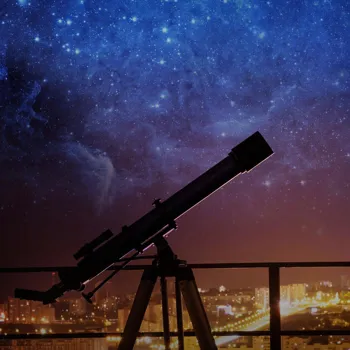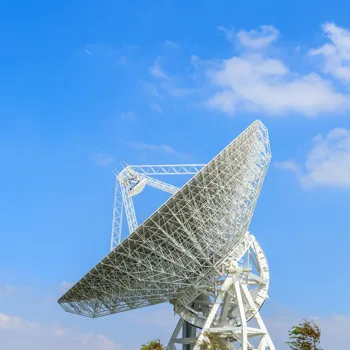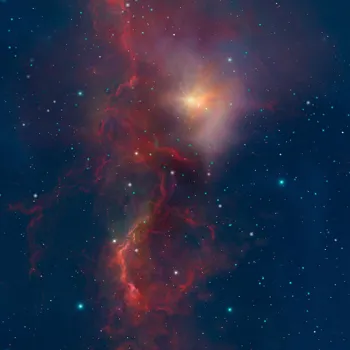Unveiling Light's Secrets: How Photons Illuminate the Cosmos. Dive into the journey of light in astronomy
Ever looked up at the night sky and wondered how astronomers know so much about stars that are light-years
away? The answer lies in something very fundamental: light.

But light isn't just what illuminates our surroundings; it's a messenger from the cosmos, carrying incredible amounts of information about the universe to our telescopes.
Let's embark on a journey to understand the crucial role light, specifically in the form of photons, plays in unlocking the secrets of the cosmos.
Star's energy journey as photons through absorption and re-emission process
Imagine a star, born from massive clouds of gas and dust. Deep within its core, nuclear fusion is constantly happening which releases immense energy. This energy doesn’t simply burst outwards; it begins a long and fascinating journey as photons of light.

These photons are generated through these reactions and they start travelling outwards, bumping into countless particles within the star's dense interior. This process of constant absorption and re-emission is what we call radiation.
Photon escape from star core reveals star's history
This is a very slow and random walk that can take thousands or even millions of years for a photon to escape the star’s core.

What’s truly amazing is that each photon carries information about the star’s internal environment; its temperature, density, and composition are all imprinted on the light we eventually observe.
Light is an amazing tool in understanding how events from long ago have affected the makeup of nearby objects and how they will eventually change.
Light from distant galaxies reaches us after traveling for billions of years
Once these photons finally escape into the vast emptiness of space, they travel unimpeded towards us. This journey can take years, decades, centuries, or even millennia. The light we see from distant galaxies started its journey long before humans even existed on Earth.

That means astronomy is like looking into the past. The light from the sun takes only about 8 minutes to get to Earth. However the light from the next nearest star takes several years. From other galaxies, the light reaching us has been travelling even longer.
Even more unbelievably, when astronomers look at objects at the very edge of the visible universe, they are seeing light which has been travelling for billions of years.
Telescopes capture electromagnetic spectrum for astronomy
The type of telescopes used in astronomy, such as optical telescopes for visible light, radio telescopes for radio waves, and infrared telescopes, are all designed to capture different parts of this electromagnetic spectrum.

These telescopes are our eyes on the universe, allowing us to collect and analyze the light that has travelled across vast distances.
Modern telescopes which are ground based and in space, along with advanced analysis software, allow astronomers to determine the distance and properties of stellar objects.
Telescopes capture radiation to study astronomical objects
When the electromagnetic radiation of various wavelengths arrives at Earth, it's captured by telescopes. The nature of the telescope depends on what range of the spectrum astronomers wish to study.

For instance, there are optical telescopes that work with visible light, radio telescopes that capture radio waves, and infrared and ultraviolet telescopes that see those types of radiation.
The electromagnetic radiation of various objects often contains clues about the composition, temperature, speed, and distance of astronomical objects.
Studying starlight reveals temperature and chemical composition
The type of light a star emits tells us its temperature, with hotter stars appearing bluer and cooler stars appearing redder.
By studying the spectrum of light, which is essentially a rainbow-like pattern created when light is passed through a prism, we can identify the elements present in the star’s atmosphere.
Each element absorbs light at specific wavelengths, creating dark lines in the spectrum — a unique fingerprint that reveals the star’s chemical makeup.
Doppler Effect used to calculate speeds of objects in space
Furthermore, the way light's wavelengths get stretched or compressed depending on whether an object is coming towards us or moving away is called the Doppler Effect. This is used to calculate the speeds of objects.

When an object is moving towards us, its light waves are compressed, shifting it towards the blue end of the spectrum (blueshift). When an object is moving away, its light waves are stretched, shifting it towards the red end of the spectrum (redshift).
By measuring this shift, astronomers can determine the velocity of distant galaxies and other celestial objects.
Studying light reveals cosmic mysteries in astronomy
The journey of a photon is not just a physical one; it's a journey of discovery. By studying light, astronomers can unravel the mysteries of the universe, from the birth of stars to the expansion of the cosmos.

Every photon that reaches our telescopes is a messenger, carrying secrets from distant corners of space and time.
In India, with its growing astronomy community and modern observatories, the study of light continues to play a vital role in expanding our understanding of the universe and our place within it.
AI Generated Content. Glance/InMobi shall have no liability for the content